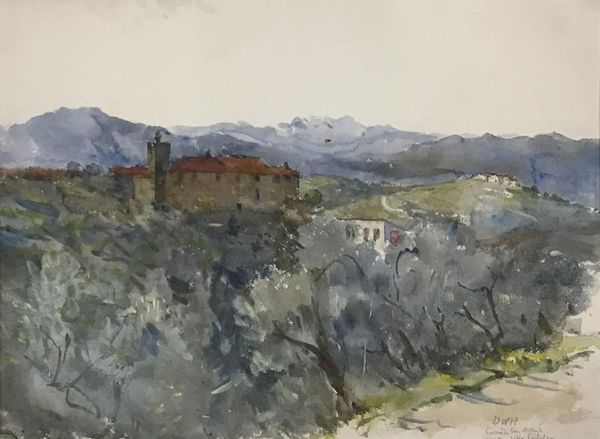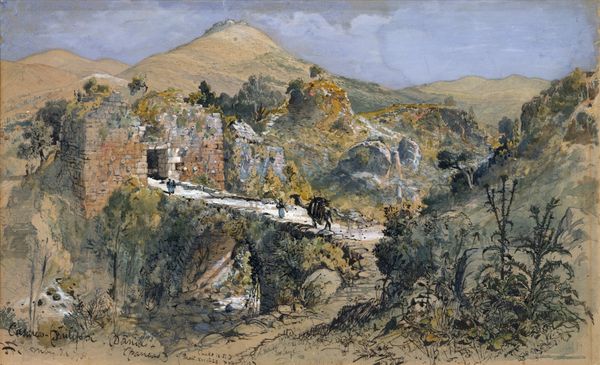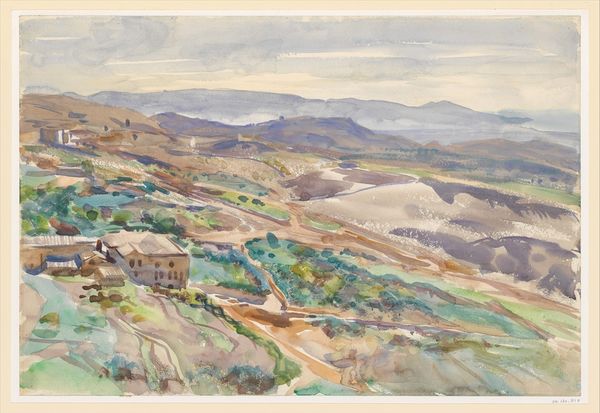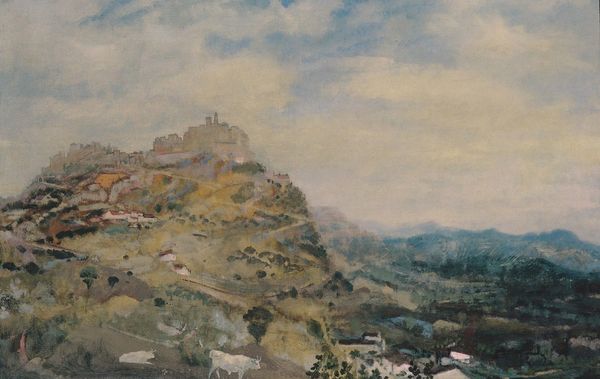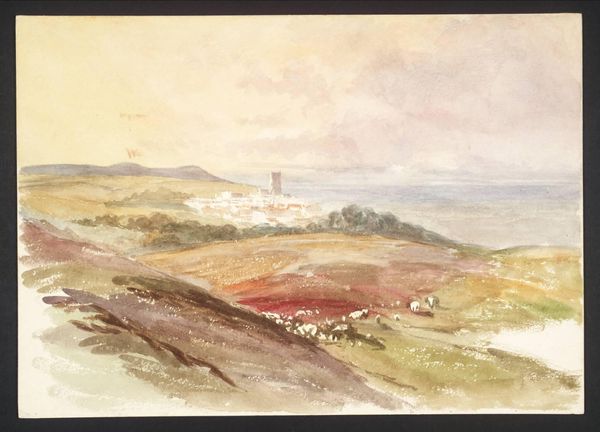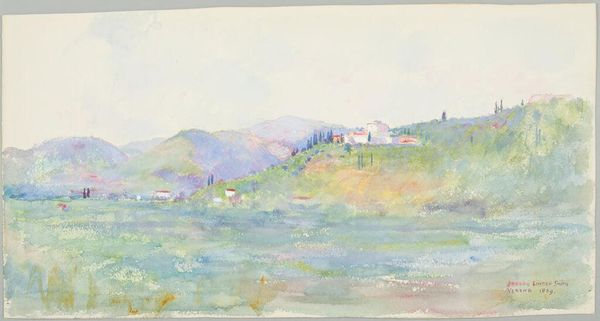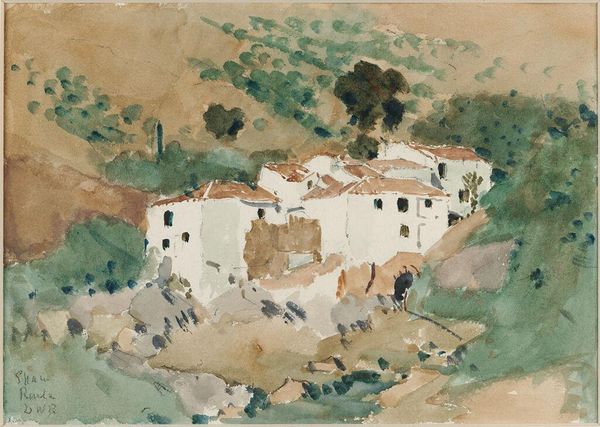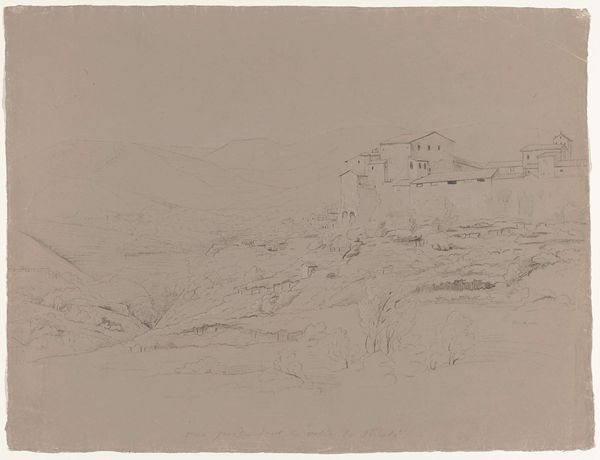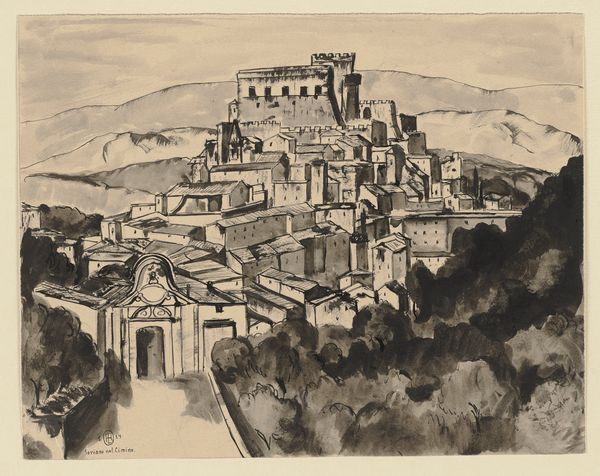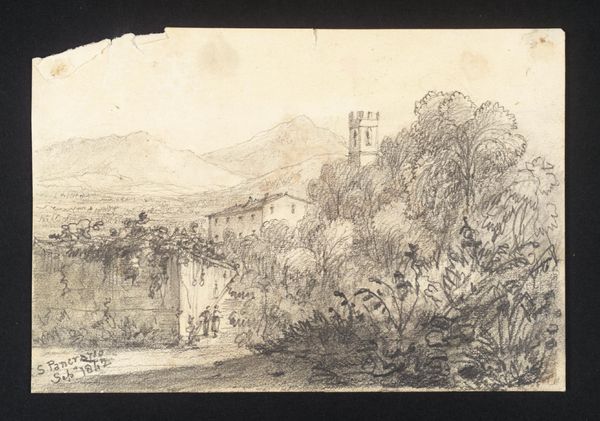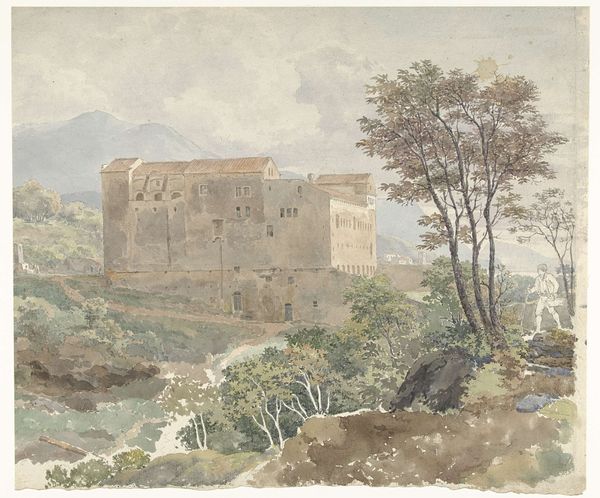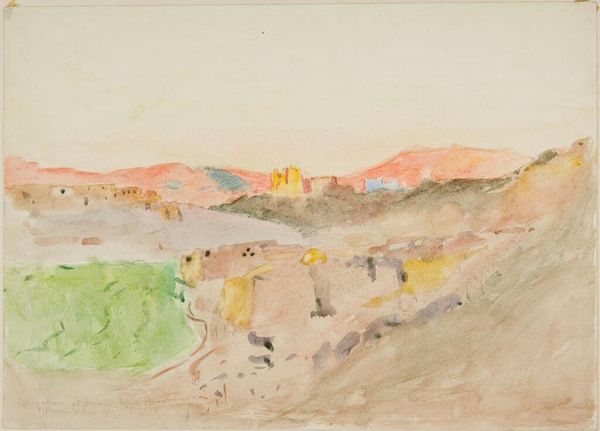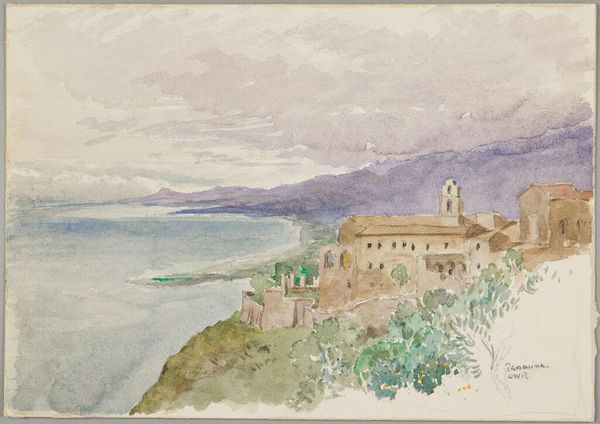
Copyright: Public domain
Curator: Looking at this landscape, I feel this hushed stillness, almost like the world is holding its breath. There's a dreamlike quality to the watercolor tones. Editor: Indeed. This watercolor painting, created in 1898 by Enrico Nardi, is titled "The municipality of Roviano seen from Anticoli". It provides a fascinating glimpse into Italian rural life at the turn of the century, offering viewers a carefully rendered depiction of place through this hilltop settlement. Curator: Hilltop towns have always captured the artistic imagination. This piece almost feels like an illustration from a fairy tale, a remote sanctuary. How do you view such imagery fitting into the broader culture, Editor? Editor: Historically, the romantic allure of such vistas became entangled with nation-building efforts; they depicted idealized versions of national heritage, emphasizing beauty. They promoted certain values—stability, tradition, picturesque authenticity. While aesthetically appealing, such imagery sometimes masked harsher social and economic realities that the populations residing in these spaces had to endure. Curator: That makes me ponder if artists who engaged in these themes did so purposefully. As for this watercolor piece, there's an exquisite softness to the buildings clustered closely together on that ridge, each detailed with such sensitivity despite its miniaturization. Does that precision relate to accuracy or idealization, though? Editor: Realism always blends artifice with perceived truth, so the answer isn't either-or. Artists chose techniques that allowed for subtle political expression: landscape was not separate from ideological production; in a young nation like Italy, it became fused with questions of territory and national identity. Nardi lived in a moment defined by shifting conceptions of 'Italy', caught between modern transformations and the enduring legacy of regionalism. Curator: Considering all this really highlights the work as a nexus of influences; so many themes and considerations, layered and flowing with pigment onto the paper. Well, I know I’m leaving with plenty to ponder and a fresh angle on Italian history and landscapes. Editor: Precisely, and sometimes it's that complexity, those unresolved questions lingering long after the viewing, that leave the strongest mark.
Comments
No comments
Be the first to comment and join the conversation on the ultimate creative platform.
